Abstract
The isolation of Fusobacterium necrophorum present in small numbers in heavily contaminated material such as faeces or soil is hampered by the lack of an efficient selective medium and by the high minimum infective dose of the organism. A sensitive method for the detection and isolation of faecal strains of F. necrophorum type A was based on the subcutaneous injection of faeces, suspended (5% w/v) in broth culture of Actinomyces (Corynebacterium) pyogenes or Staphylococcus aureus to increase fusobacterial infectivity, into mice pretreated with clostridial antitoxins. When necrobacillosis developed F. necrophorum was identified microscopically in tissue from the advancing edge of the lesion and isolated on a partly selective medium. The enhancement of fusobacterial infectivity produced by A. pyogenes and by S. aureus was high, but the latter was slightly the more efficient, enabling as few as 80 F. necrophorum organisms/g of faeces to be detected. Use of the method showed that 3 of 16 wallabies had F. necrophorum in their faeces at the time of examination. Numerous epidemiological applications are suggested.
Full text
PDF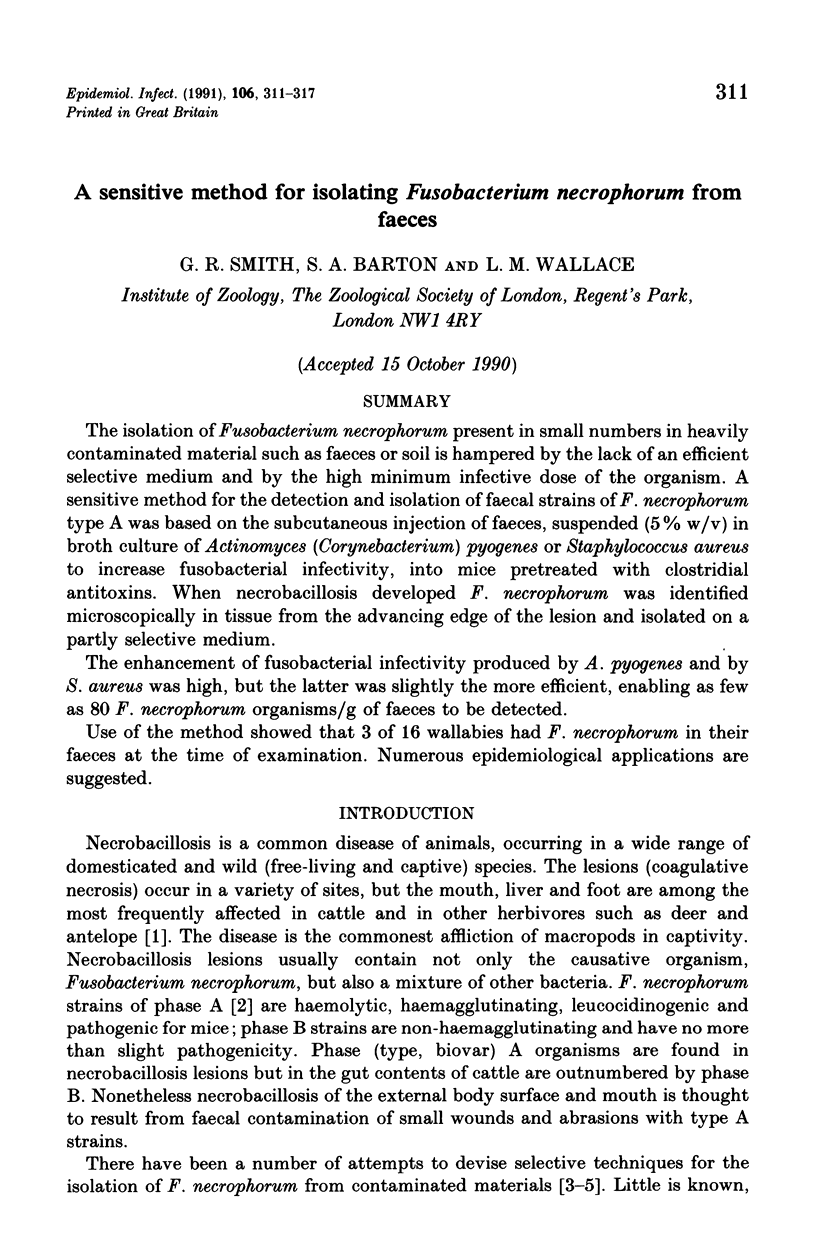
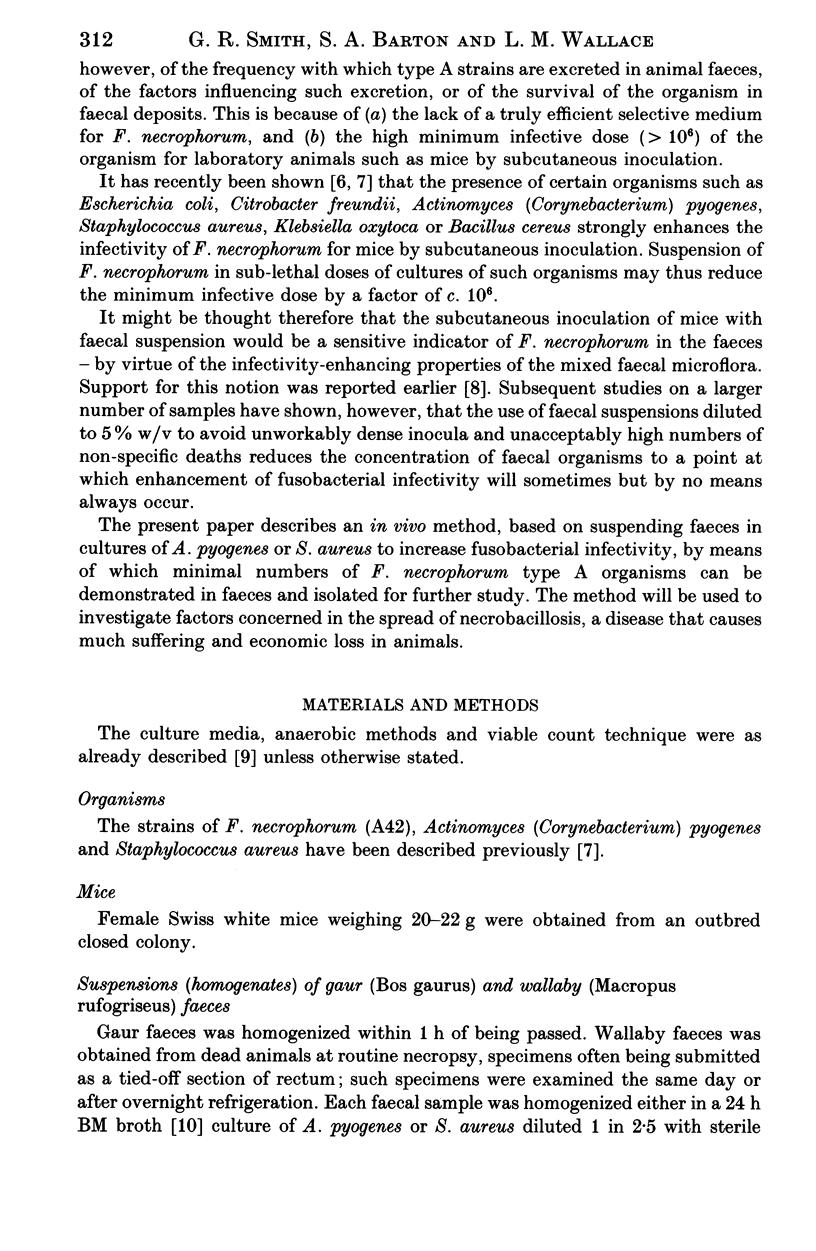
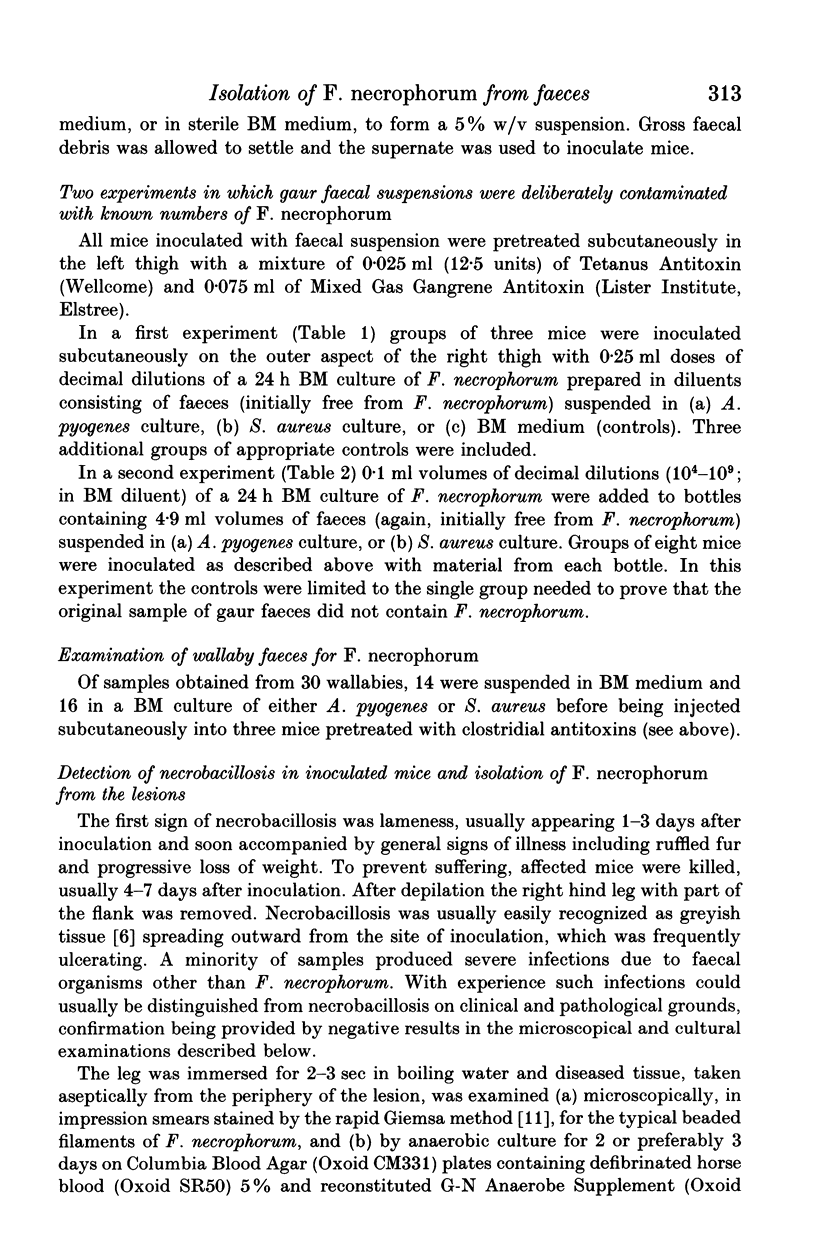

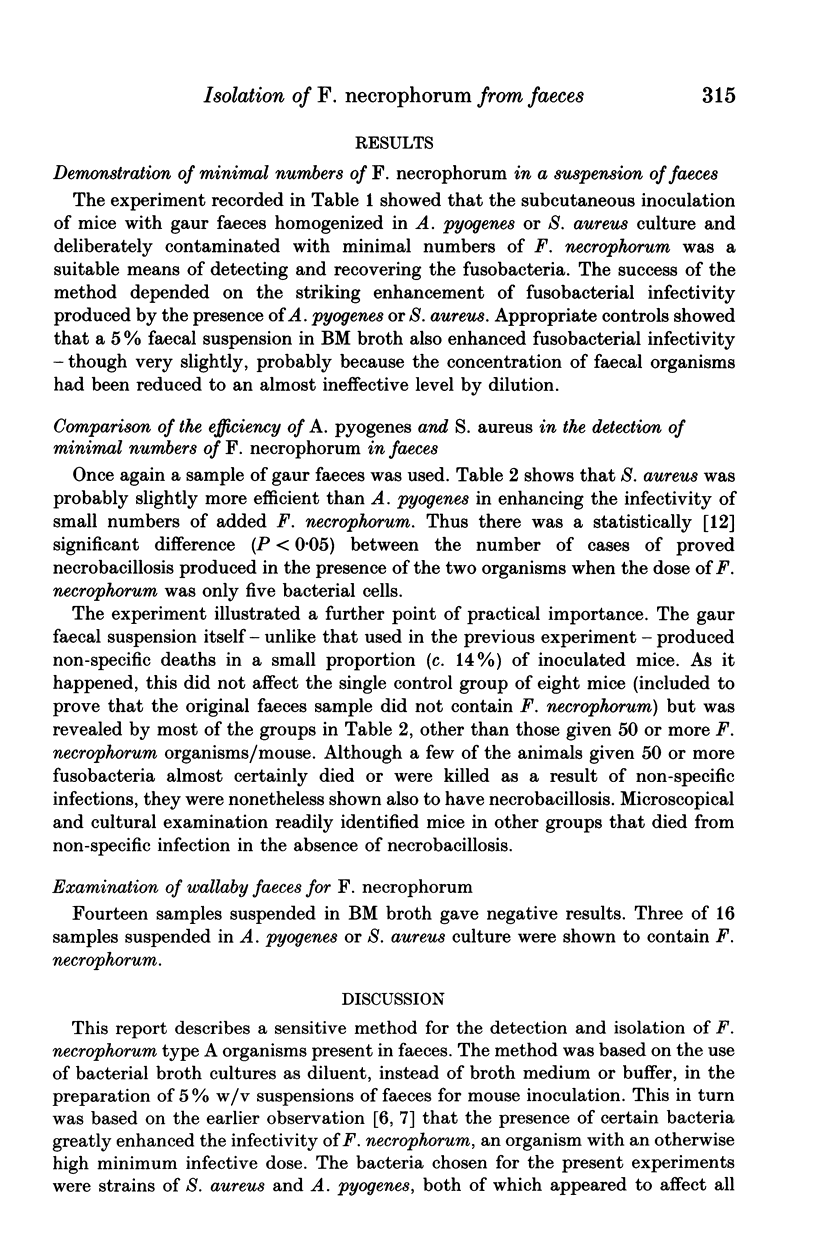
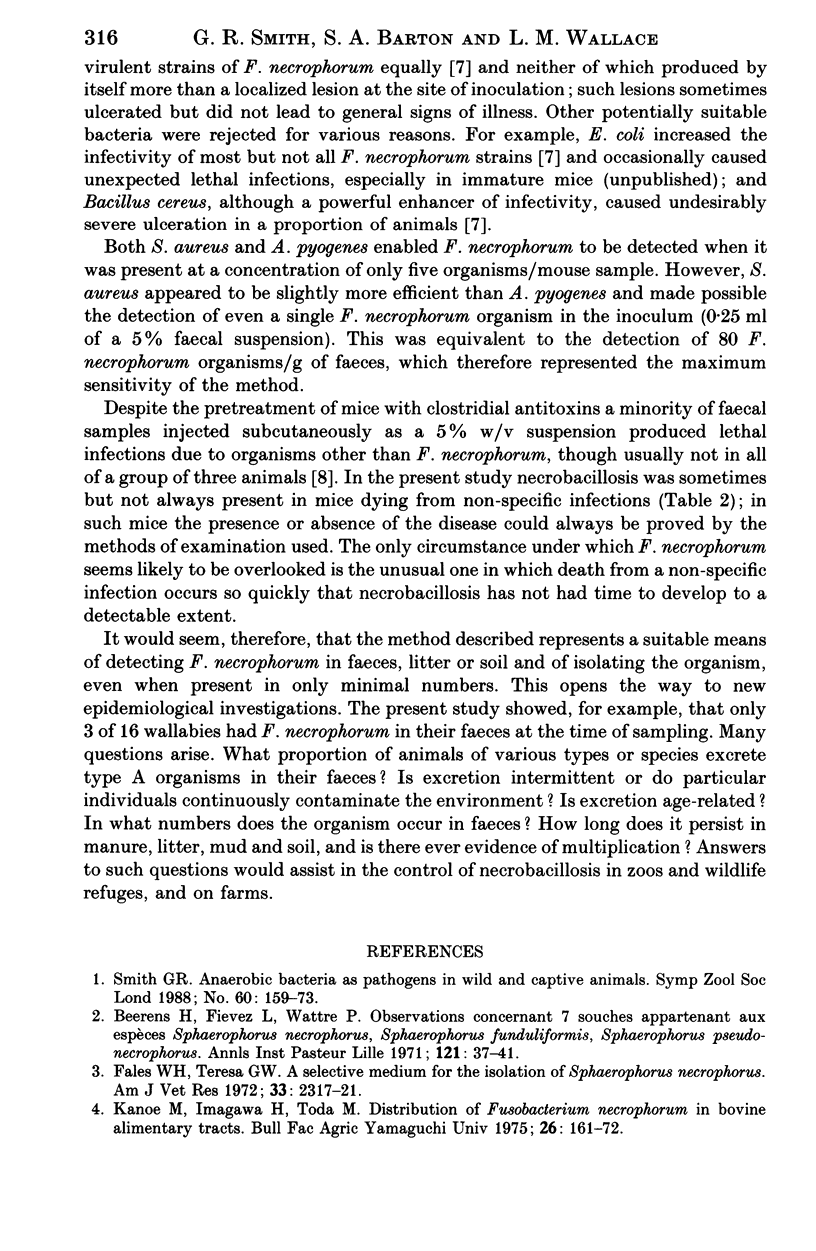
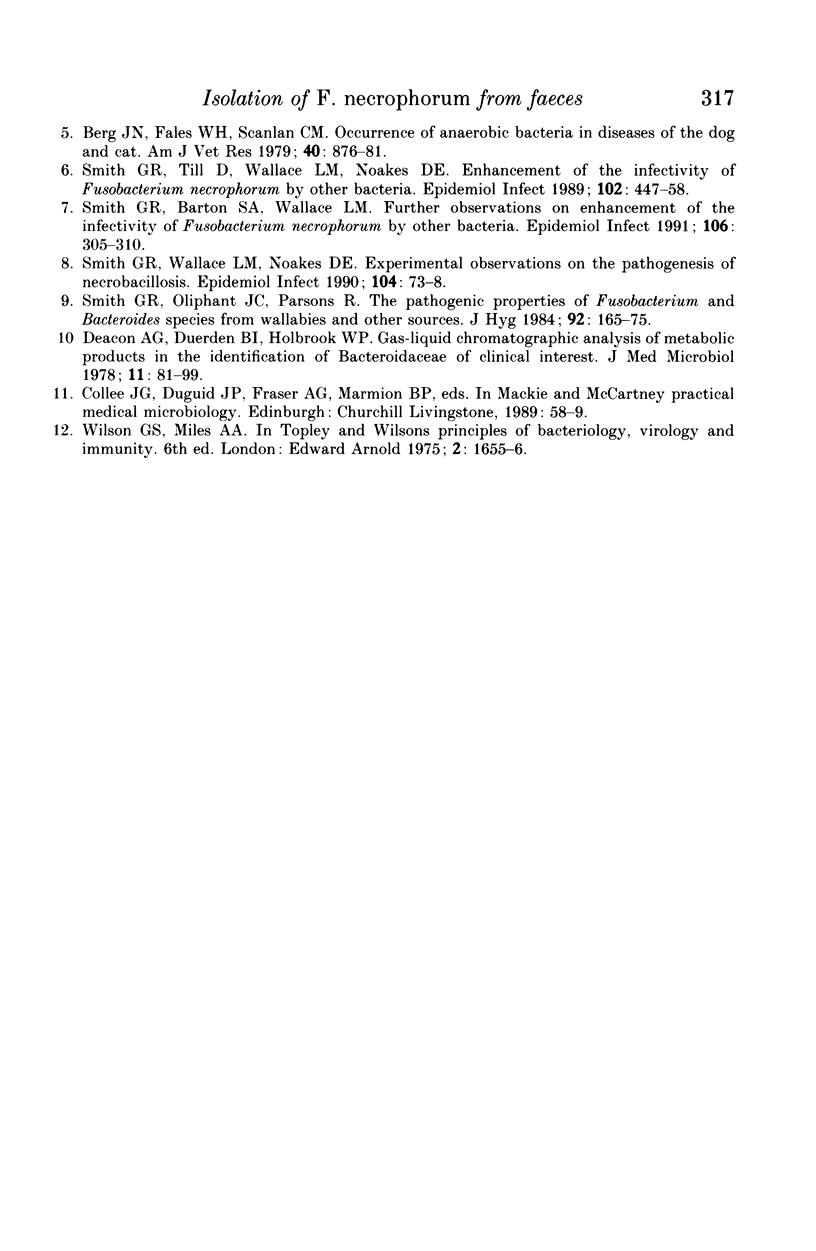
Selected References
These references are in PubMed. This may not be the complete list of references from this article.
- Beerens H., Fievez L., Wattre P. Observations concernant 7 souches appartenant aux espèces Sphaerophorus necrophorus, Sphaerophorus funduliformis Sphaerophorus pseudonecrophorus. Ann Inst Pasteur (Paris) 1971 Jul;121(1):37–41. [PubMed] [Google Scholar]
- Berg J. N., Fales W. H., Scanlan C. M. Occurrence of anaerobic bacteria in diseases of the dog and cat. Am J Vet Res. 1979 Jun;40(6):876–881. [PubMed] [Google Scholar]
- Deacon A. G., Duerden B. I., Holbrook W. P. Gas-lipuid chromatographic analysis of metabolic products in the identification of bacteroidaceae of clinical interest. J Med Microbiol. 1978 May;11(2):81–99. doi: 10.1099/00222615-11-2-81. [DOI] [PubMed] [Google Scholar]
- Fales W. H., Teresa G. W. A selective medium for the isolation of Sphaerophorus necrophorus. Am J Vet Res. 1972 Nov;33(11):2317–2321. [PubMed] [Google Scholar]
- Smith G. R., Barton S. A., Wallace L. M. Further observations on enhancement of the infectivity of Fusobacterium necrophorum by other bacteria. Epidemiol Infect. 1991 Apr;106(2):305–310. doi: 10.1017/s0950268800048457. [DOI] [PMC free article] [PubMed] [Google Scholar]
- Smith G. R., Oliphant J. C., Parsons R. The pathogenic properties of Fusobacterium and Bacteroides species from wallabies and other sources. J Hyg (Lond) 1984 Apr;92(2):165–175. doi: 10.1017/s0022172400064184. [DOI] [PMC free article] [PubMed] [Google Scholar]
- Smith G. R., Till D., Wallace L. M., Noakes D. E. Enhancement of the infectivity of Fusobacterium necrophorum by other bacteria. Epidemiol Infect. 1989 Jun;102(3):447–458. doi: 10.1017/s0950268800030168. [DOI] [PMC free article] [PubMed] [Google Scholar]
- Smith G. R., Wallace L. M., Noakes D. E. Experimental observations on the pathogenesis of necrobacillosis. Epidemiol Infect. 1990 Feb;104(1):73–78. doi: 10.1017/s0950268800054546. [DOI] [PMC free article] [PubMed] [Google Scholar]


